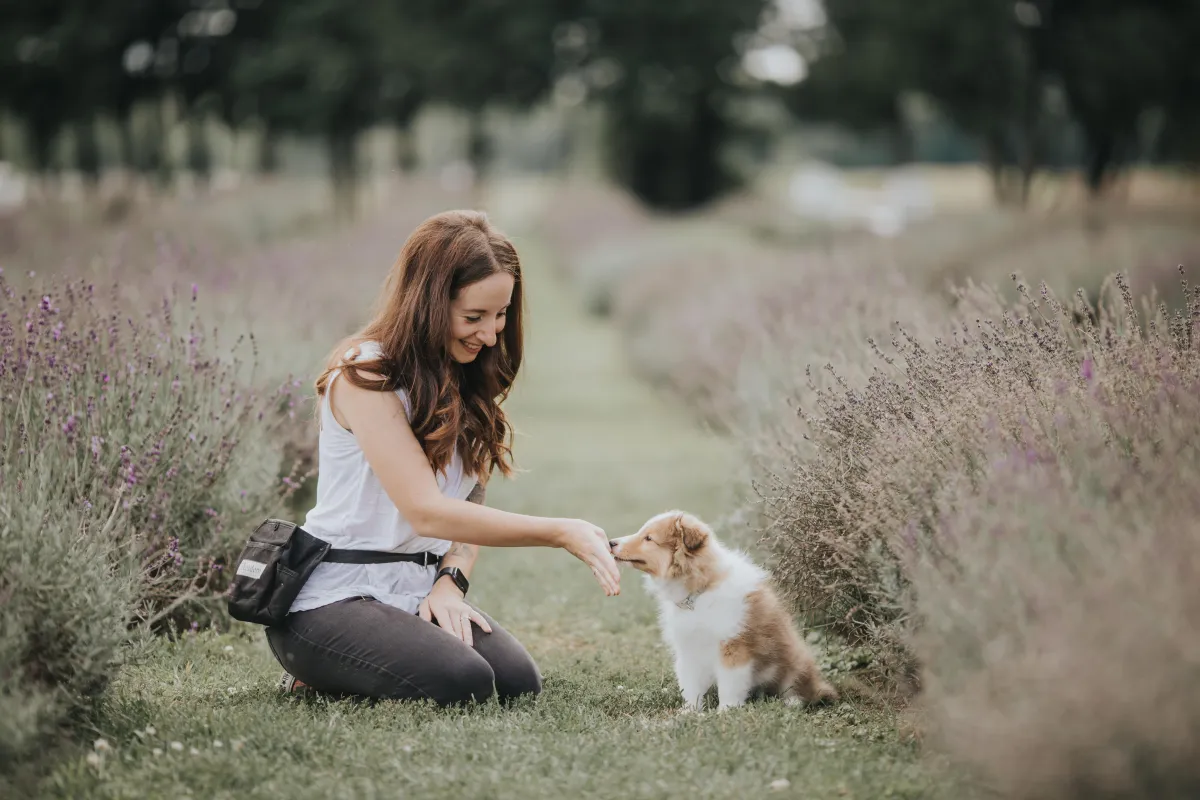Dog Inspired Blog
Guidance, Tips & Inspiration for Every Step of Your Dog’s Journey.

Puppy Adolescence: Why is it so hard?
Ah, the puppy stage — full of cuddles, curiosity, and learning. Of course it comes with it's own set of challenges like house training, biting and teaching them to be comfortable being alone. Just when you start to feel like you’ve got the hang of things, bam! — adolescence hits. And suddenly your sweet, attentive puppy seems to forget everything you taught them.
If this sounds familiar, you’re not alone. Puppy adolescence is real, and it’s one of the most challenging phases for dog guardians. But with the right knowledge and support, you can get through it — and not just surviving adolescence - because who just wants to be in survival mode everyday, I mean thrive and actually enjoy your young, teenage puppy.
What Is Puppy Adolescence?
Puppy adolescence is the developmental phase between puppyhood and adulthood, typically it starts around 6 months old and lasting until 18 to 24 months, depending on your dog’s breed and size.
This is when hormones surge, their brain goes through major changes, and previously trained behaviours seems to have fallen out of their heads. Think of it as the canine equivalent of the teenage years.
Oh and they are now so much bigger than they were just a few months ago. Which increases the amount of trouble they can get into.
🚨 Common Changes During Adolescence
Here’s what you might notice during this time:
"Selective hearing": Your previously responsive puppy now seems to ignore you, especially outside.
Increased energy and reactivity: More jumping, barking, leash pulling, and reacting to other dogs or people.
Increased curiosity: Chewing, digging, and seemingly ignoring cues — they are much more distracted than they ever were before.
Fear periods: Sudden fear of things they were previously fine with (like strangers, kids, or garbage bins).
Regression in training: House training, recall, crate comfort — all may temporarily regress
🧠 Why It Happens
Adolescence brings physical changes (hello, hormones!) and brain development. Think of it like your puppy's brain is under construction. Especially the parts that deal with impulse control.
The physical changes are not just hormonal. Remember when I said they are now so much bigger than they were before? Well a whole new world has now opened up to them. They can now see what's been hiding on the counter or on that book shelf. They can reach higher places, especially if they jump up. Now food on the counters is no longer safe.
They also have more energy and endurance than before. Your previous 15 minute walk around the block no longer cuts it for your teen puppy. They'll seem to demand more of your attention and nap less. Which can be exhausting.
But the thing is, all of this is very typical and normal behaviour. We just have very little tolerance when it becomes an inconvenience and even more so when it disrupts our schedule.
We are creatures of habit and when we finally get into a good routine with our puppy, we can have a hard time with new changes.
Even as a dog trainer, I get these feelings of frustration. I'm not immune to being human. But having gone through adolescence - and really struggled to make it to the other side, I learnt a thing or two that I want to share with you.
✅ How to Support Your Adolescent Dog
The good news? There’s so much you can do to make this stage smoother.
Here are my top tips:
Stay consistent. Don’t assume they “forgot” their training — regressions are a normal part of the learning process and going back to the basics and continue to practice at a level they can be successful at.
Reinforce what matters. Focus on reinforcing the important stuff. Like when they come to you when you call, or when they sit to get your attention (instead of biting or jumping on you)
Puppy proof - round 2. Don't put the crate or the baby gates away just yet. Even if your teenage puppy seems to have decent manners and skills in the house, PLEASE don't take it for granted like I did. Since your puppy has grown since your initial puppy proofing, you'll want to go through your house again to be sure everything is safely put away.
Keep socializing. Continue safe, positive exposure to people, dogs, and environments.
Up the mental enrichment. Puzzle toys, sniffy walks, and training games can burn energy and keep them busy.
Don’t punish — guide. Punishment can increase fear or frustration. Focus on positive reinforcement, management and redirection. It's all about being proactive instead of reactive to your puppy's unwanted behaviours.
🐶 When to Get Help
You don’t have to go through this alone. If your adolescent pup is struggling or you're feeling overwhelmed, professional guidance can make a world of difference.
We offer 1:1 consultations and a brand new Online Puppy Adolescent Course (launching June 6th, 2025!) to help you navigate this tricky time with confidence.
💛 The Takeaway
Adolescence is a temporary — and totally survivable — phase. With patience, structure, and support, your pup will grow into the well-adjusted adult dog you’ve been working toward.
You’ve got this. And if you need help, we’re here for you.

Let's Work Together
Whether you’re just bringing home a puppy or you’ve already started your service dog training journey, Dog Inspired is here to help you every step of the way.
Service Areas: Deux-Montagnes, St-Eustache, Laval, Montreal
